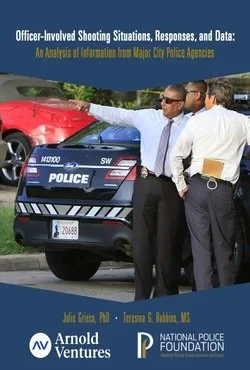By Ruth Moyer
This evaluation suggests “the current GVI implementation in Philadelphia has been associated with significant reductions in group member involved firearm violence. The continued effectiveness of the implementation will likely depend on a range of factors, including necessary adjustments to evolving group activity and firearm violence.” Between January 2020 and May 2022, at least 1,147 Group Member-Involved shootings have occurred in Philadelphia. Approximately one out of every five of these shootings results in a death (23.1%). The current implementation of Group Violence Intervention (GVI) in Philadelphia has produced significant reductions in Group Member-Involved (GMI) firearm violence at the group-unit level during the study period, January 2020 to May 2022. It has also produced significant reductions in GMI firearm violence at the census tract-level during the study period. Importantly, due to COVID-19-related restrictions on public gatherings, the current GVI implementation in Philadelphia departed from the usual call-in meeting model. Instead, Mobile CallIn Team (MCIT) custom notification visits provided the primary means of GVI implementation. Given the results indicating a reduction in firearm violence, a GVI implementation through MCIT custom notification visits appears to maintain the effectiveness of GVI. Post-Treatment relative to Pre-Treatment, a group-unit, on average, experienced a significant 38.6% reduction in shootings per week. Notably, receiving 2 doses of treatment relative to 0 doses of treatment produced a significant 50.3% reduction in shootings per week for a group-unit. A census tract experienced a non-significant 25.1% reduction (p=0.07) in GMI shootings per week, Post-Treatment relative to Pre-Treatment. Importantly, however, where a census tract received 4 or more doses relative to 0 doses (Pre-Treatment), there was a significant 44.4% reduction (p=0.03) in GMI shootings per week. The effects of GVI on individual outcomes such as victimization and offending merit further research. A longer study period in prospective research will provide an opportunity to more precisely detect the effect of GVI on individual behavior and victimization risk. Enforcement actions were associated with a reduction in GMI shootings. Once it was subject to an enforcement action, a group experienced a significant 42.8% reduction (p=0.04) in shootings. Future research should identify the particular levers in an enforcement action that are most effective. This Evaluation conducted qualitative research to inform the quantitative findings. The qualitative research components were the following: (1) informal telephone conversations with GVI recipients; (2) surveys given to Philadelphia Police Department (PPD) officers involved in MCIT custom notifications; and (3) informal surveys distributed at two Philadelphia Roadmap for Safer Communities community meetings.
Philadelphia: University of Pennsylvania, 2023. 80p.




